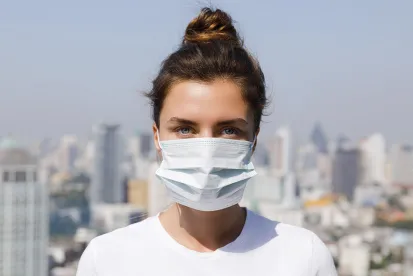Recently, the Michigan Supreme Court held that Governor Gretchen Whitmer lacked the authority to issue or renew executive orders relating to COVID-19 beyond April 30, 2020. After the Michigan Supreme Court issued its ruling, the Michigan Attorney General publicly stated that she could not enforce any Executive Order that imposed COVID-19 related measures on businesses. Other states may face similar challenges to the enforceability of governor-issued executive orders.
However, in the face of these court challenges, in various states, such as California, Oregon, Washington, and now Michigan, state OSHA agencies are issuing their own emergency rules to require that businesses implement measures to protect their employees. These emergency actions impose temporary rules to combat the spread of coronavirus in all workplaces by requiring employers to implement risk-reducing measures. Those measures often include social distancing, barriers, face coverings, cleanings, and information sharing. In addition to requirements that would apply to all workplaces, the rules often encompass further requirements for certain job duties involving close-contact work activities, as well as health care activities involving direct patient care.
Generally, emergency rules issued by state OSHA agencies can remain in effect for 180 days. Under most orders, for example, employers would have to ensure six-foot distancing between all people in the workplace. That would include designing work activities and the workplace to eliminate the need for any worker to be within six feet of another person. If such separation is not practical, the employer would have to ensure that face coverings are worn and that as much distance as practical is maintained. The distancing requirement may be met with an impermeable barrier, in some cases, that creates a “droplet buffer" of at least six feet in distance as measured between the mouths of the affected people. And, some rules may require implementation of plexiglass or other barriers as a matter of course – such as on production lines.
Another example pertains to all high-contact surfaces used by multiple employees, such as door handles and cash registers. Employers would have to ensure that such surfaces are thoroughly cleaned at the beginning of each shift, and likely throughout the day. Under some state orders, employers will need to conduct a COVID-19 exposure risk assessment. Such an assessment would account for a variety of risk elements, including the anticipated or actual working distance between all employees and the freqauency, duration, and variety of close-contact work activities. Employers engaged in health care operations, including direct patient care, aerosol-generating procedure and emergency first-responder work: may also be required to develop and implement an infection control plan. Plans for these businesses might need to include such steps as outlining worker tasks requiring the use of personal protective equipment (such as a respirator), spelling out hazard control measures, and describing face-covering requirements.
Michigan’s MIOSHA rule, for example, specifically requires employers to implement a policy prohibiting in-person work when work can feasibly be performed at home. This raises questions about whether an employer can be cited if it does not permit white-collar employees to work from home. A similar requirement also exists under the Pennsylvania rules at present.
OSHA and state agencies are actively citing employers for violating OSHA health and safety standards. (In fact, more than $1.2 Million in federal OSHA fines have been issued in the past 4-5 months related COVID-19 issues and concerns.) While many of the published citations have been for healthcare and residential living centers, manufacturers certainly are being investigated following employee complaints. We recommend that regardless of the nature of your business, you should become familiar with prevailing OSHA-related orders in jurisdictions in which your company does business, and ensure that you are complying with the material requirements provided in these emergency orders.




 />i
/>i

